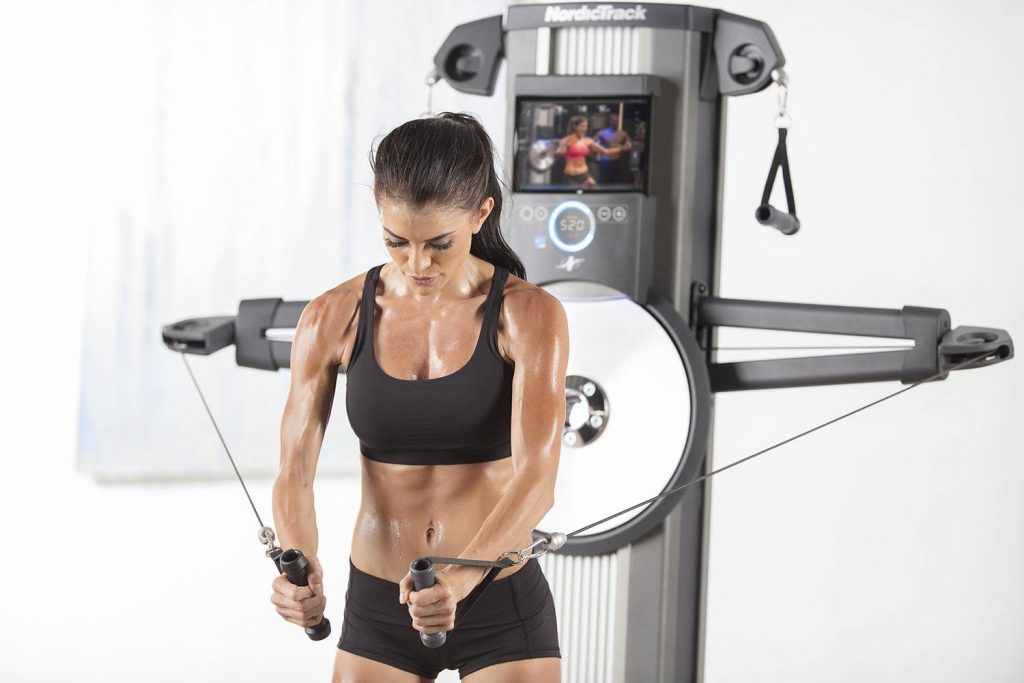Strengthening your arms allows you to balance the strength on both sides of the body, to gain power and to sculpt your figure harmoniously. Start a 30-day, special arm challenge with targeted exercises for the shoulders, biceps or forearms and discover our tips for optimising arm muscle strengthening.
What are the advantages of strengthening your arms?

In contrast to the abdominals, legs, buttocks or back, the muscle groups of the arms are often forgotten in fitness sessions. Yet, arm muscle groups offer many advantages, from an aesthetic point of view as well as in everyday life:
- When constantly mobilised by carrying weights or by performing repeated movements at work or at home, gaining strength in your forearms helps to avoid injuries, such as tendonitis or sprains.
- Strengthening your arms allows you to be stronger to push, pull, carry or lift loads easily.
- Whether you are right- or left-handed, one arm will certainly be more developed than the other: You can restore the balance through muscle-strengthening sessions.
- Training your arms and shoulders brings visible benefits for the whole body: Better posture, less back and neck pain, slimmer arms and better-defined muscles.
How do you make your arms work?

To exercise your arms, choose exercises that target all muscle groups, from the forearms to the shoulders:
- The deltoid muscles: These muscles located on the shoulders are mobilised when raising and lowering the arms.
- The biceps: Used to flex the arms, these important muscle groups have a great influence on the shape of the arm.
- The triceps: Opposite to the biceps, these stretch out the arms. Strengthening the triceps helps to limit the slackening of the arms that often appears with age.
- The forearm muscles: These are generally activated by the movements of the hand.
Strengthening exercises for arms
Here are a few ideas for exercises to be carried out anywhere without equipment or with accessories which are easy to find at home, aimed at all the arm muscles:
- Push-ups: With this exercise, the whole body is lifted with the force of the arms, by bending them and staying well supported. Push-ups work the biceps and triceps, but also the pectoral muscles. If you can’t do classic push-ups, try a simpler version with your knees on the ground.
- Triangular push-ups are a variant that puts more stress on the trunk: Position yourself as if you were doing a plank, bringing your hands together to form a triangle with thumbs and forefingers, elbows outwards and bend your arms to do push-ups.
- With inclined push-ups, performed with the hands raised on a step, the deltoids are strongly mobilised, which is ideal for strengthening the shoulders.
- Dips with a chair: Sit with your legs stretched out on the floor, with a chair behind you. With your arms back, grab the edge of the chair and pull yourself up until you are resting with outstretched arms. Then, do a series of flexions to work your biceps and triceps.
- With a small bottle of water in your hand as if it were a dumbbell, sitting on a chair, stretch out your arm and tilt the water bottle behind you to the level of your shoulder blades, keeping your elbow close to your head.
- Squeeze and loosen your fist around a tennis ball to strengthen your forearms.
Mistakes to avoid for good arm muscle strength
To optimise your arm strength programme, a few criteria should be taken into account:
- For a harmonious result, develop not only the arms but also other muscle groups of the upper or lower body.
- Warm up well before starting the session and remember to hydrate.
- If you wish to strengthen your weaker arm, favour the lateral exercises by slightly increasing the repetitions with the right arm if you are left-handed and vice versa.
Your arm challenge: 30 days to muscular arms

For quick results, challenge yourself with a 30-day arm strength exercises challenge. Choose 2 or 3 exercises for the arms from those described above and integrate them into your training circuit with a progressive increase in difficulty. Start by performing a series of 10 repetitions of each exercise on the first day and add for example 1 or 2 repetitions each day.
Plan one day of rest per week and then resume at the same level as the day before. When the circuit exceeds 20 repetitions, split them in two, interspersed with a recovery time. After 20 days, you will have established good habits and will already be able to measure the results of your efforts.
Check out our Fitness & Training page for more advice.
